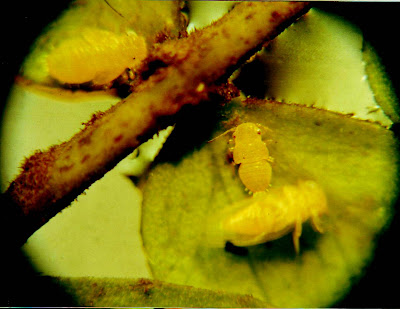1. I love insects for their diversity, far and wide, including their relatives - spiders, crustaceans, centipedes, millipedes, grouped under the largest phylum of the world, Arthropoda;
2. I love insects for their cosmopolitan distribution, from the tropics to the poles, from the deepest bottom of the ocean to the top of the highest mountain, the driest desert to the rainiest forest;
3. I love insects for their tough exoskeleton made of chitin, unrivaled by man's invention of its resistance to weather, physical and chemical action, its resilience and dynamic variation in shape, pattern, color, design, etc, giving insects superb resistance, adaptability and beauty;
4. I love insects of their body segmentation like knights in armor: three main body segments (head, thorax and abdomen) and six appendages, which make a class of their own - Class Insecta or Hexapoda.
5. I love insects for all their extreme sizes, from the microscopic Fig Wasp to the Atlas moth whose wings measure a foot across, and the Goliath beetle, which by its name dwarfs the June beetle, not even the rhinoceros beetle.
6. I love insects for their dimorphism, such as being winged or wingless even in the same species (male bagworms are winged while the females are wingless.)
7. I love insects for their ability to fly: clumsy as in the hawk moth, fluttering among butterflies (Lepidopterans), stealth among Dipterans (houseflies), levitation among dragonflies (Odonata);
 This skipper possesses certain characteristics of the moth
This skipper possesses certain characteristics of the mothand the butterfly. Its antennae are that of a butterfly, while
its wings are that of a moth. It is active as dusk (crepuscular),
whereas butterflies are diurnal and moth are nocturnal)
Indeed scary, isn't? It's bluff to ward off potential predator.
Actually this is the front view of a caterpillar, its eyes are
actually false, so with its mouth. It's Nature's game of deceit
and conceit - all in the name of survival (of the fittest). Internet
9. I love insects for their incomplete life cycle (Hemimetabola), skipping the pupal or resting stage - egg, young, and adult - such as in the case of bugs (Hemiptera), aphids (Homoptera), and grasshopper (Orthoptera);
A looper, a caterpillar of a butterfly, sometimes called
geometrid caterpillar owing to its characteristic way of
moving by loop and bound. (Internet)
10. I love insects for their abbreviated life cycle (Ametabola) a survival tool of the most primitive of all insects and perhaps arthropods, the silverfish (Thysanura), and springtails (Collembola).~
Field cricket (Acheta bimaculata) is nature's fiddler. On a warm summer night, its fiddling like the violin can be heard quite a distance, but is actually a love call or response.



.jpg)


No comments:
Post a Comment